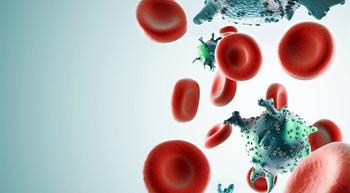
New Research Aim to 'Get Ahead' of Melanoma by Tracking Its Genetic Evolution
Understanding how melanoma spreads can lead to better outcomes. That's what researchers at UCSF aimed to do.
Melanoma is more likely to spread, or metastasize, to other parts of the body when not caught early. And once it has become metastatic, melanoma is the deadliest form of skin cancer, with a five-year survival rate of 15 to 20 percent.
But innovative research being done at the University of California San Francisco (UCSF) has allowed researchers to not just study how this cancer evolves and spreads, but also to recreate the steps in that evolution in the lab using normal skin cells.
The implications of this research — presented in two companion papers in the publication Cancer Cell — could help doctors identify cancers before they have a chance to metastasize and lead to more targeted therapies.
In the first study, led by UCSF Health skin cancer pathologist Boris Bastian, M.D., Ph.D., and UCSF cancer geneticist Hunter Shain, Ph.D., scientists sequenced and compared the DNA and RNA of malignant tumors and the moles from which they originated. They also examined samples of metastatic tumors and their primary melanomas, all from the same patients, for a total of 230 tissue samples from 82 patients.
They did this to better understand the journey from pre-cancerous mole to malignant tumor — and in some cases, to metastatic cancer.
In sequencing the tumor DNA, Bastian, Shain and team identified gene mutations that occur at different points of cancer growth and discovered RNA changes that could be connected to the changes in gene activity.
Using this method, researchers learned that a cell’s transformation from benign to cancerous is not as simple as a switch being flipped. Instead, the process starts early and continues to build up over time, with multiple independent mutations in the molecular pathways that control cell growth, tumor suppression and DNA regulation. This continuous tweaking of a cell’s genes eventually leads to the breakdown of its natural protective mechanisms, which then triggers the cancer.
Most notably, researchers discovered that consistent mutations in the SWI/SNF biomarker appeared to be a key to malignancy, leading them to suggest the biomarker could be used to identify dangerous moles in patients.
“During the evolution of melanoma, the SWI/SNF complex is disrupted at the transition from the benign to the malignant state,” Shain explained in an interview with CURE. “Once the SWI/SNF complex is disrupted, other chromatin remodeling complexes take its place, resulting in a massive rewiring of gene expression in the cell.”
This rewiring is an important identifier that could help doctors better recognize the disease, Shain continued. “The new gene expression programs are clearly distinct, and therefore we are optimistic that gene expression tests can help differentiate benign from malignant neoplasms moving forward.”
The second study, led by Robert Judson, Ph.D., took an even closer look at the disease by recreating and studying each step of its evolution in otherwise healthy human skin cells.
As Judson told CURE, “It is important to understand that tumor formation is dependent not only specific acquired genetic mutations, but also on the original type of cell that acquired those mutations.”
“Researchers that are exploring treatments for advanced stage melanoma use cells derived from advanced melanomas. We, however, are interested in the early detection, intervention and prevention of melanoma initiation from otherwise healthy cells to stop the disease well before it can become deadly.”
To do this, Judson and his team inserted a sequence of mutations into normal human skin cells using innovative CRISP-Cas9 gene editing to closely examine the biological effects of each step of the process.
Half of the time, Judson said, a benign skin lesion, like a mole, transitions to a malignant lesion, like a melanoma, because of a genetic mutation. But what about the other half of diagnoses? Judson and his team, “found that many melanomas find alternative, currently unknown methods, of activating these very same programs.”
The scientists also found that, in addition to unleashing tumor growth, mutations to the tumor suppressing gene CDKN2A also caused affected cells to become extremely mobile, making it easier for them to spread and metastasize to other parts of the body.
The hope is that these findings will drive further research into faster diagnoses and better treatment for melanoma patients.
“Moving forward, we hope to use this knowledge to develop biomarkers that could help determine the risk of an individual benign lesion becoming malignant prior to transformation, or to potentially identify small molecules that could reduce the risk of transformation, even if the genetic mutations were to occur,” said Judson.
“In short, our findings are a step toward developing new strategies to ‘get ahead' of melanoma transformation by through early and accurate detection.”




